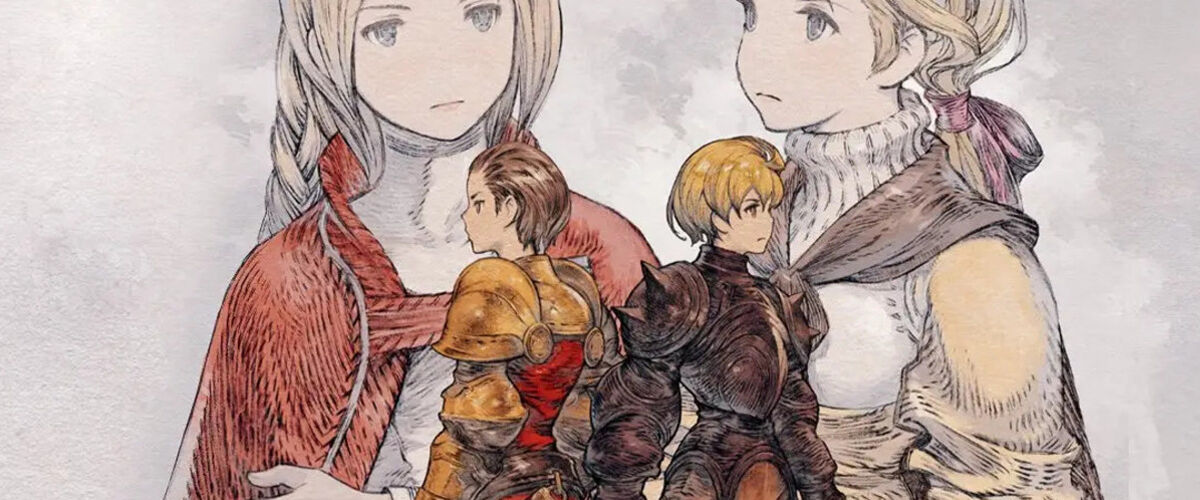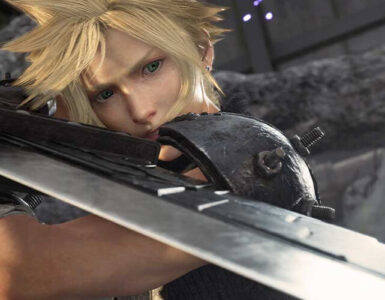There’s always some truth to a cliché, however much it may induce an eyeroll on every mention. In the case of Final Fantasy Tactics, the 1997 title has long been synonymous with weighty descriptors, from a ‘timeless classic’ to a ‘seminal masterpiece’, but the repeated use doesn’t make them less accurate. In fact, it left an indelible mark on Square Enix’s larger fantasy world and in the turn-based strategy space, as the main setting of Ivalice now enjoys a recurring presence across the franchise, and its job system was an evolutionary leap from tradition, while some of the core mechanics have grown into genre hallmarks.

Returning with spruced-up aesthetics, Final Fantasy Tactics: The Ivalice Chronicles represents a dream come true for fans of the original in more ways than one. Instead of tweaking a beloved formula, this remaster wisely opts to honour its roots and refine the rougher edges, weaving together a brilliant, deeply nuanced narrative that remains relevant to the current political reality and intricate, versatile gameplay. Throw voice acting and quality-of-life updates into the mix, and there’s even more to love about the near-perfect remaster – although its redesign and the omission of content from the PlayStation Portable (PSP) version War of the Lions may not sit well with some.
Setting the stage for a roller-coaster ride of despair, betrayal, and hope, the romp opens with the introduction of Ramza Beoulve, a forgotten hero during a civil war between the ruling forces of Prince Goltana (Black Lion) and Duke Larg (White Lion) in Ivalice, known as the War of the Lions. There’s more to this game of thrones than it seems, however, and the narrator makes no secret of the unreliable annals of history and lays it out for the players – with the country’s leadership in limbo after the 50-Year War against the nation of Ordalia, both Prince Orinas and Princess Ovelia are candidates, but backed by different factions.
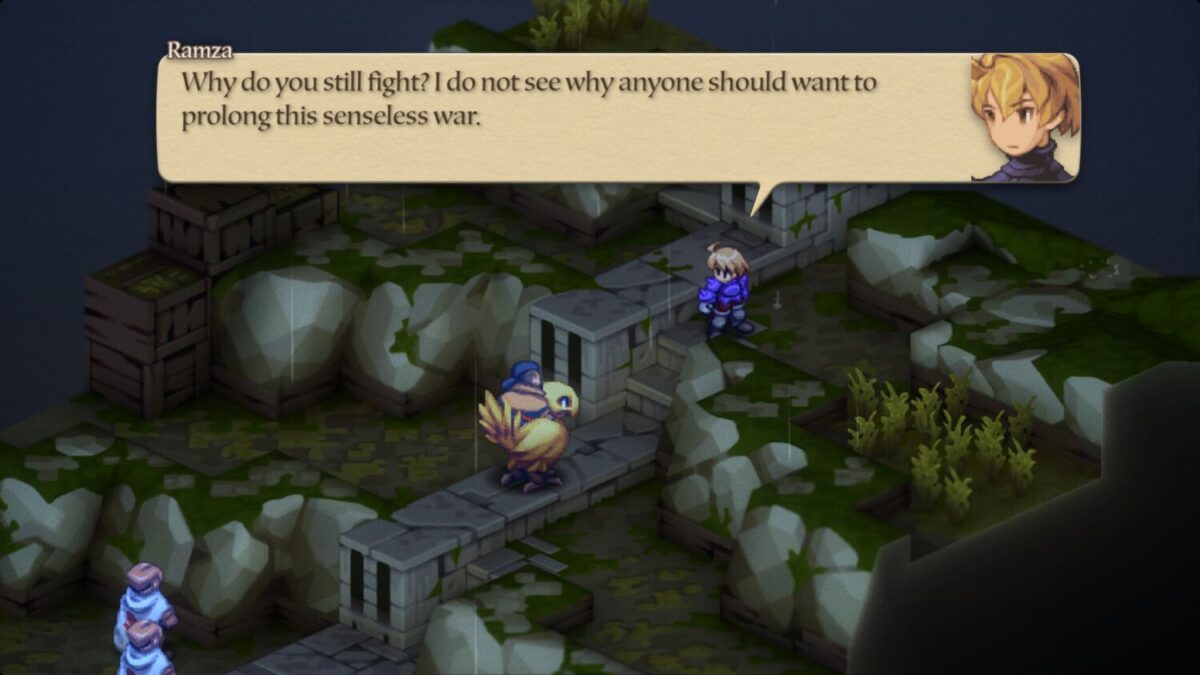
The White Lion is on the side of the former, while the Black Lion supports the latter, thrusting Ramza, who now fights against corruption as a mercenary, and his adopted-brother-turned-Black-Lion-ally Delita Heiral, into opposing sides of the conflict. What unfolds along the way is a political thriller that explores the extent of manipulation by figures in power and religion, reminding players that the perceived “truth” is often a construct, and topped off with a generous helping of personal drama and tragedy. Sounds familiar? Welcome to the current state of the world.
The messaging is hardly the only element that has weathered the passage of time. Like before, the job-based mechanics in Final Fantasy Tactics: The Ivalice Chronicles involve assigning characters to a class, with Chemist and Squire as the starters to unlock more advanced options, learning and managing new abilities, and levelling them in combat to meet the prerequisites for the next level of specialisation. Each of the 20 jobs boasts its own set of action, reaction, support and movement skills, and players are free to change a unit’s job to another and mix-and-match their loadouts once learned, such that the competencies are no longer job-specific.
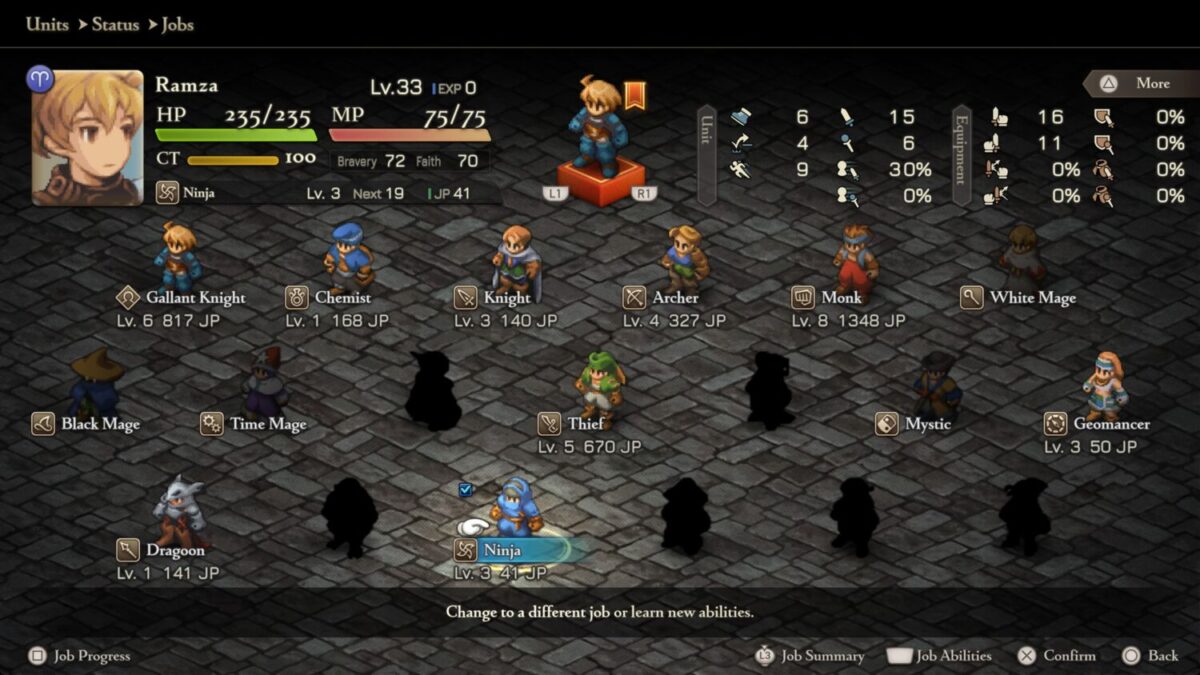
The versatility allows for a great deal of experimentation across different play styles, and it ensures that the effort is rewarded. Apart from cultivating the ideal build for every job, there’s also a need to consider the synergy between party members, and it feels satisfying when the two come together neatly: Monks, for instance, may only attack with a fist in the beginning, but cross-equipping the dual-wield ability (after unlocking Ninja) turns them into a twice-attacking brawler who makes quick work of the enemy. It sounds easier than it actually is, as certain genre basics, including the act of using items, don’t work the same here, with only the Chemist and characters who have inherited the skill having access to them. Even so, not all consumables can be used right off the bat – whether it’s a potion or Phoenix Down, players will first need to spend Job Points (JP) and unlock the action.
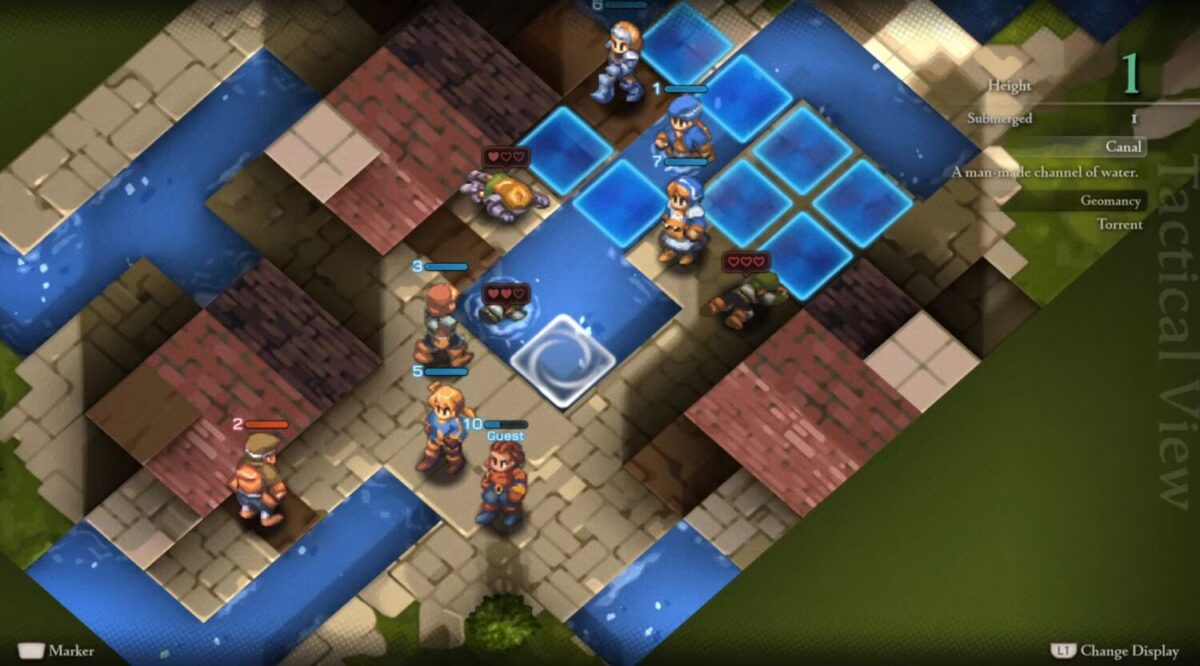
The “simple to grasp, but difficult to master” rhetoric carries over to the battlefield, which retains the isometric camera from its past. Where the original suffered from obscured vision or awkward angles due to the 3D environment, however, the overhead perspective of the new Tactical View makes it easier to strategise character movement and actions by eliminating visibility issues. Fundamentally, the flow of combat remains unchanged: players assign their deployed units to a position on the grid-based field during the planning phase, taking into account variables such as elevation and terrain type.
When it’s time to engage, the left side of the screen displays the turn order of all allies and enemies, with their travel distance dictated by a fixed number of squares. The party can comprise both generic units, recruited through the Tavern, and special named characters like Mustadio and Agrias, who all gain experience points and JP – prerequisites for levelling up – after completing an action. Topographical and weather conditions will trigger different effects, from stronger Thunder magic in the rain and the Invincibility status when submerged in water, to being poisoned in swampy lands.

By extension, the older, more antiquated quirks of yesteryear would be familiar to longtime fans, but may take newcomers by surprise (and not necessarily in a good way). Resurrecting a fallen ally, for instance, has a chance of failing, which means wasting a turn, while strikes with a high success rate can miss at the most crucial of moments, resulting in defeat. The luck-based mechanics, alongside the chain reaction sparked by one wrong move, no matter how small, contributed to the game’s notorious difficulty, and that hasn’t changed much for Final Fantasy Tactics: The Ivalice Chronicles.
What’s different is how it now eases players into the experience through various quality-of-life improvements, allowing for a gentler learning curve and smoother gameplay. Instead of fixing a standard mode, three difficulty modes have been designed for players of different skill levels: Squire (Easy), Knight (Normal), and Tactician (Hard). The updated action prediction system shows all vital information at a glance, including hit chance, damage taken or dealt, whether an attack would be countered, and the current JP of a unit, accompanied by the ability to reset movement, so long as no action was performed.

If a battle proves too unfavourable, there are quick options to restart from the beginning or change out the party loadout, load a previous save, or return to the world map and pick things back up at a later time. Scrolling through each character on the turn order list while holding down on the left trigger reveals more specifics, such as the type of spell being cast, the striking range, and when it will come into effect – a game-changer when managing glass cannons like ninjas or mages. While most of this information could be found previously, it was buried under layers of menus and tabs, making it a tedious, unintuitive affair. Fast-forwarding, a common addition to retro RPGs with a modernised sheen, is also available here, granting players control over the speed of their battles.
Outside of combat, Final Fantasy Tactics: The Ivalice Chronicles continues its quest for improved accessibility. The lore of Ivalice is dense, and the array of characters can complicate the player’s understanding of their dynamics and roles in the overarching story, so a lot of care went into crafting an interactive timeline called State of the Realm. Taking a page out of Final Fantasy XVI’s Active Time Lore mechanic (a natural progression, considering Creative Business Unit 3 worked on both titles), it offers a comprehensive overview of major past and present events, complete with cutscenes that can be rewatched anytime, a glossary of in-game jargon, a clear, detailed breakdown of the zodiac compatibility chart, and useful tips.
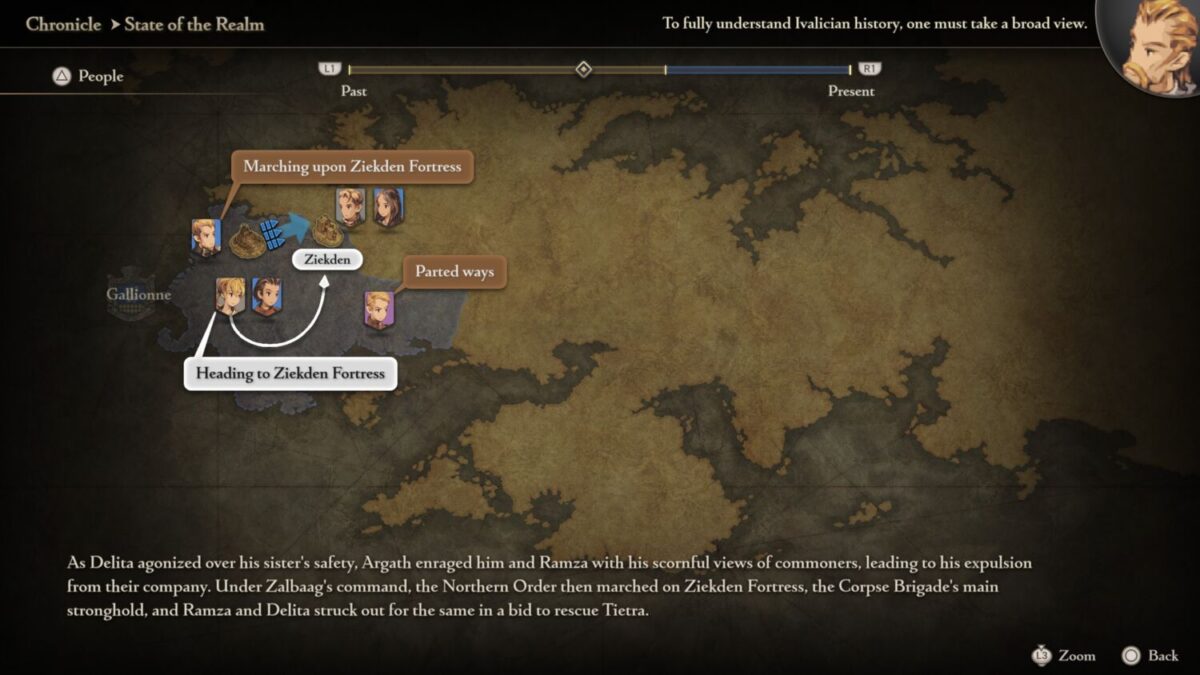
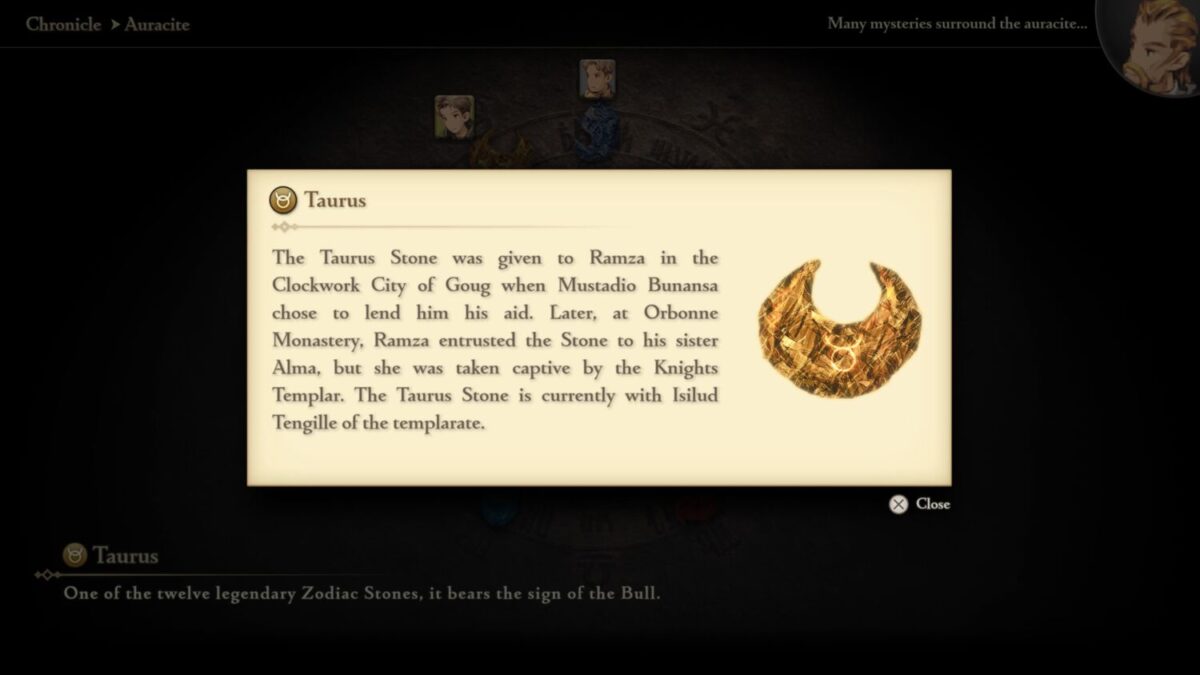
Where strategic skirmishes between points on the map couldn’t be avoided in the original RPG, the remaster allows players to flee from them, or trigger a random encounter at will for grinding purposes. Side quests are now easier to follow, with indicators pointing in the right direction, while a job tree and one-pagers for the classes display unlock requirements and the full list of skills, respectively. These refinements are hardly flashy, but they go a long way in making the experience less overwhelming without sacrificing its essence.
It’s a pity, then, that Final Fantasy Tactics: The Ivalice Chronicles doesn’t feature content from War of the Lions, as the additional Dark Knight and Onion Knight jobs and recruitable allies from other Final Fantasy titles, including FFXII’s Balthier, would have taken well to the shine. Even so, the remaster is nothing short of stellar, accentuated by handcrafted visuals and full voice acting.

Marking a departure from Square Enix’s affinity for its signature HD-2D aesthetic, the fantasy world boasts an updated graphical style that may not align with initial expectations. However, the slightly bevelled edges, canvas-like look, and soft focus lighting carry a distinctive charm that’s quick to burrow its way into the heart, complementing the watercolour hues of the beautifully animated opening scene. For purists and hardcore enthusiasts, the bundled-in Classic Edition brings back the old-school look, although it’d be welcome if there were an option to switch between the two on the fly.
Breathing more life into the adventure is the impressive voice work in both the English and Japanese versions, adding emotional weight to important cutscenes. Whether it’s Joe Pitts or Shinnosuke Tachibana, Ramza’s cries of anguish and anger prove effective at dealing blows to the gut, with most of the roster, including minor figures like Rapha, enjoying fleshed-out characterisation. The occasional interaction between party members during combat also lends personality to their depictions, and it certainly helps that Final Fantasy Tactics: The Ivalice Chronicles delivers better translation pulled from War of the Lions, eliminating the issue of poor localisation in the original.
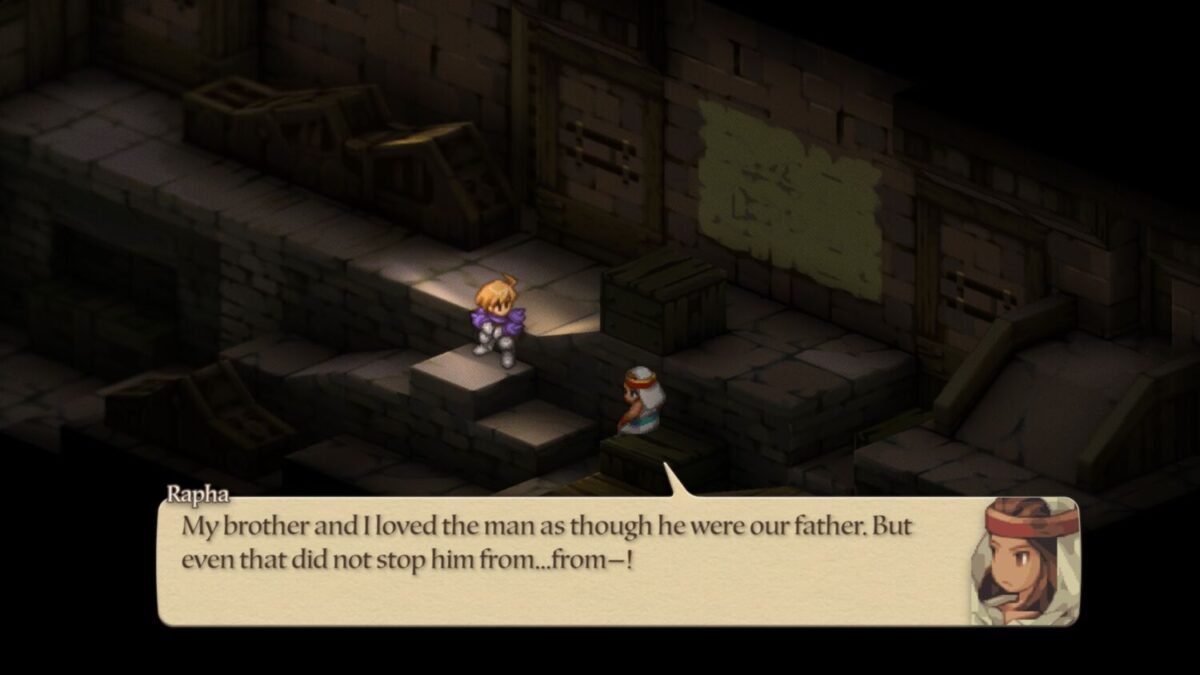
It’s never easy honouring a beloved legacy, yet the remaster does so with ease. A faithful, thoughtful homage to its roots, it serves as a reminder of its well-earned reputation as a seminal work in the tactical RPG genre, and spruces up all the best parts of the experience through a visual overhaul. Final Fantasy Tactics: The Ivalice Chronicles may have omitted content from War of the Lions, but it’s no less memorable, promising an intricate, relevant narrative, deep gameplay, strong voice acting, and updated interface elements that will continue to stand the test of time.
GEEK REVIEW SCORE
Summary
Final Fantasy Tactics rewrote history back in the day, and The Ivalice Chronicles presents the best way to experience its rise to one of the greatest in the tactical RPG pantheon, keeping the conversation for decades to come.
Overall
9/10
-
Story - 9.5/10
9.5/10
-
Gameplay - 9/10
9/10
-
Presentation - 8.5/10
8.5/10
-
Value - 9/10
9/10
-
Geek Satisfaction - 9/10
9/10

